My introductory article to sandbag training discussed some of the important, underappreciated variables that make sandbag training very unique. Once you gain an understanding of how to use these concepts of instability, creating endless solutions for your fitness programs becomes very easy and the versatility of sandbag training greatly expands.
I realize some people may believe that instability training is unnecessary and just focusing on the standard big lifts of cleans, squats, press, and pull-ups is more than enough to build a really strong foundation. However, this does go against most of what we know about Eastern European training methods, which are now the basis of many strength and performance programs.
One of the fathers of periodization and the introduction of the concept into the U.S., Tudor Bompa spoke specifically about an important phase called “anatomical adaptation” (AA). The purpose of this phase according to Dr. Bompa is:
The AA phase represents the foundation on which the other phases of training are based. The name of this phase has been specifically selected to illustrate the fact that the main objective of strength training is not an immediate overload, but rather a progressive adaptation of an athlete’s anatomy. The objectives of the AA phase are focused around “prehabilitation” with the hope of preventing the need for “rehabilitation.” In other words, focusing on a higher volume of training with low to medium loads will aid in the adaptation level of an athlete’s muscle tissue, ligaments and tendons, and prepare the body for the more challenging program inherent in the following phases of training. Furthermore, a methodologically structured AA phase will aid in the improvement of inter-muscular coordination (i.e. balance, coordination and neural firing patterns), and increase the bone mineral content and proliferation of connective tissue that surrounds the individual muscle fibers.4
Bompa even goes on to discuss a key concept of “exercises that train muscles from multi-angles should be incorporated along with an overall flexibility program.” Unfortunately an idea that many trainers get lost in when they think they are doing the right thing of “doing the basics.”
Many believe the AA phase to be the same as the General Physical Preparation (GPP) period in training cycles. They may definitely be the same; their purposes seem to be very similar.
According to Dr. Michael Yessis’ book, Secrets of Russian Fitness and Sports Training, the correct use of GPP places, “emphasis on many different kinds of exercises for all the joints of the body, movements that require twisting, bending, leaning, and swinging are part of the schedule…”
Unfortunately many coaches are making GPP programs very high volume specialized training phases rather than the initial intent of this phase of training. I believe sandbag training is one of the best forms of GPP training, but not because of the reasons most would believe.
Most coaches would think because sandbags have a tendency to be far more unstable than other strength training tools, instability of the sandbag is the reason they would fit into the role of GPP. Yes, this is a good reason, however, far from the only one.
The that fact we can load our body in so many different patterns, and sandbags allow themselves to move in all planes of motion, means we have a training tool that if used properly can address some really unique outcomes.
Is there a more practical example of how changing stability can go a long way in enhancing our conditioning?
We wanted to quantify the difference with two real world tests. In our first case study, we had a young lady well versed in kettlebell lifting and our Dynamic Variable Resistance Training program perform two different movements on different days.
The first was the 100 kettlebell swings with a 35-pound kettlebells, trying to perform the repetitions in the shortest amount of time possible. On the next training session she performed 100 Rotational Lunges with a 17-pound sandbag. The results?
| Training Variable | Kettlebell Two Handed Swing | Rotational Lunge |
|---|---|---|
| Average Heart Rate | 121 | 141 |
| Calories | 53 | 83 |
| Time | 5 min 37 seconds | 6 min 43 seconds |
| Weight | 35 pounds | 17 pounds |
If we standardize time we get the following data:
- Heart Rate: +20 beats on average higher for rotational lunge
- Calories (Standardizing Time): kettlebell – .157 a second rotational lunge – .206 a second
- Over 30 minutes and you get: kettlebell – 282.60 versus rotational lunge – 370.80
To make sure this wasn’t just a fluke we had a male perform the same challenge with a 70-pound kettlebell and 33-pound sandbag. We standardized time and got the following results.
| Training Variable | Kettlebell Two Handed Swing | Rotational Lunge |
|---|---|---|
| Average Heart Rate | 154 | 170 |
| Calories | 83 | 98 |
| Time | 5 min 46 seconds | 5 min 48 seconds |
| Weight | 70 pounds | 33 pounds |
| Repetitions | 100 | 42 per side |
Because time was standardized it is easier to see we got very similar results, especially when we consider they didn’t even complete all 100 rotational lunges in the time period. The surprise is the fact we see such changes in our standards with less than half the load. The difference was the instability that the rotational lunge provided.
A believer? That is why I wanted to outline four sandbag drills most people never use that fulfill both our goals of improving movement, muscle balance, coordination, mobility, joint integrity, and working in multiple planes.
Drill #1: Rotational Lunge
Think of the rotational lunge as a more complex version of a kettlebell swing. The drop lunge that occurs in the movement creates single leg hip extension and a projection of the weight. The unstable body position makes it difficult not to focus on using the posterior chain to develop the necessary force.
The movement of the sandbag across the body challenges our strength, as we have to absorb the continually moving load. Finally, the deceleration to the opposing side is one of the most important aspects as eccentric loading is where most injuries occur.
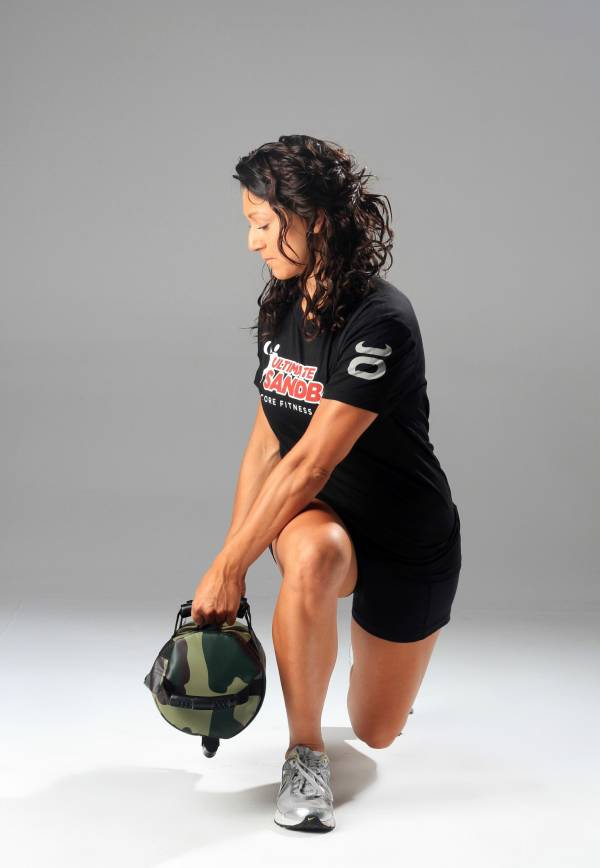
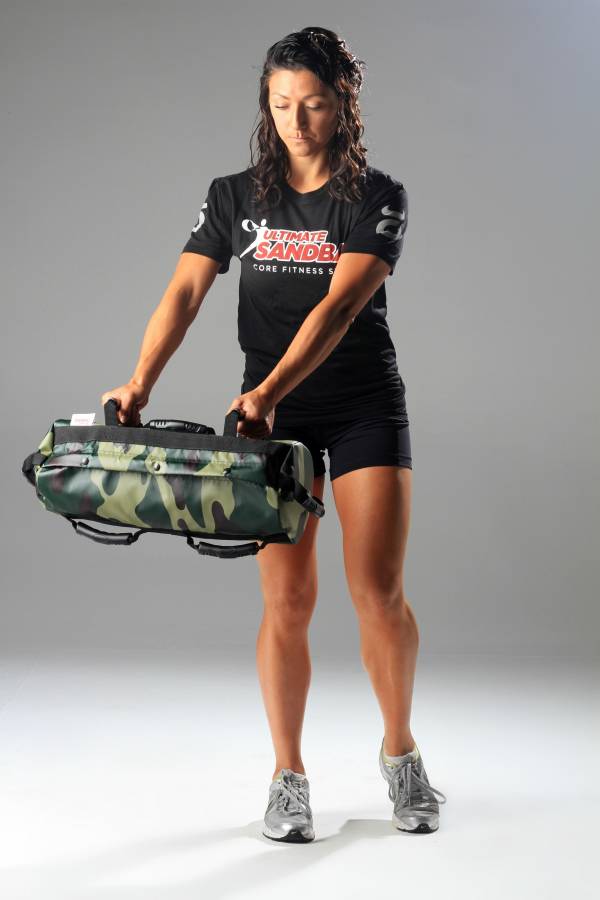
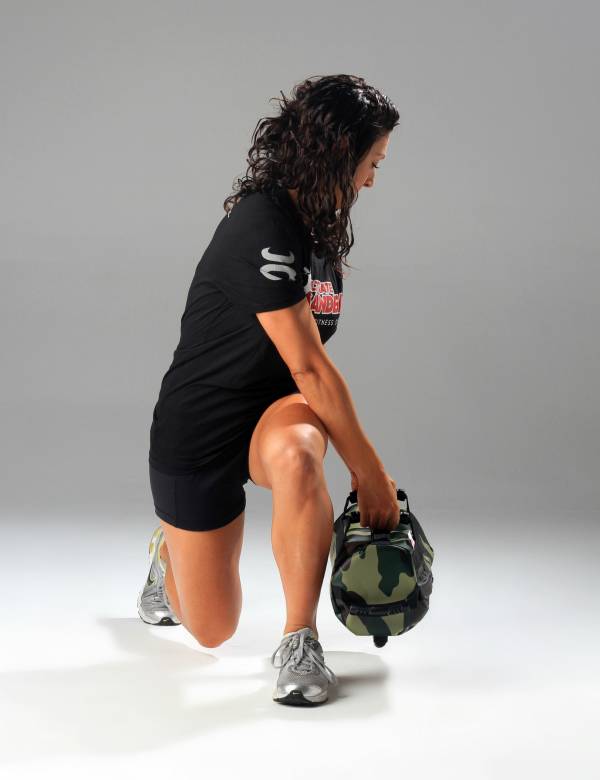
Drill #2: Rotational High Pull
In the rotational lunge the name “rotational” refers to the movement of the sandbag. In the rotational high pull, the body moves in the transverse plane to load and create force.
Moving in different planes and learning how to both produce and absorb force definitely fits into our above discussion of proper GPP training. Only working in our strongest and stable position leaves a hole in the other movement patterns.
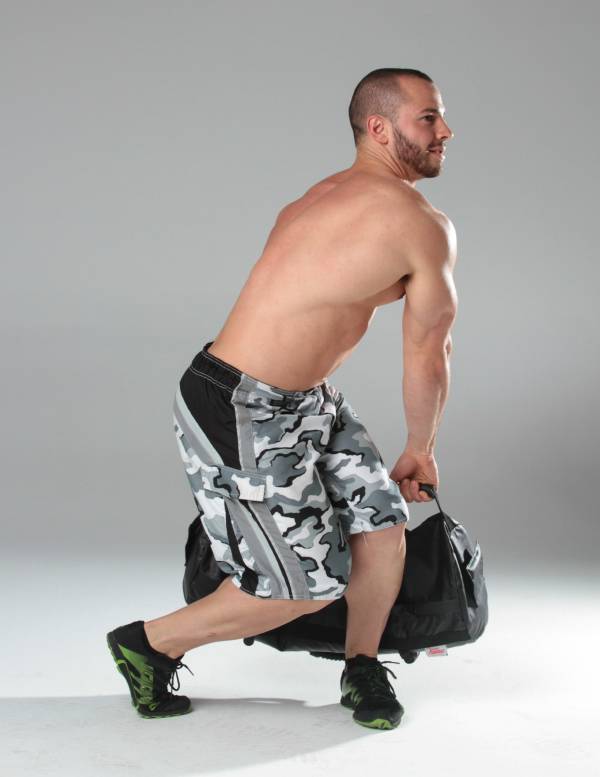
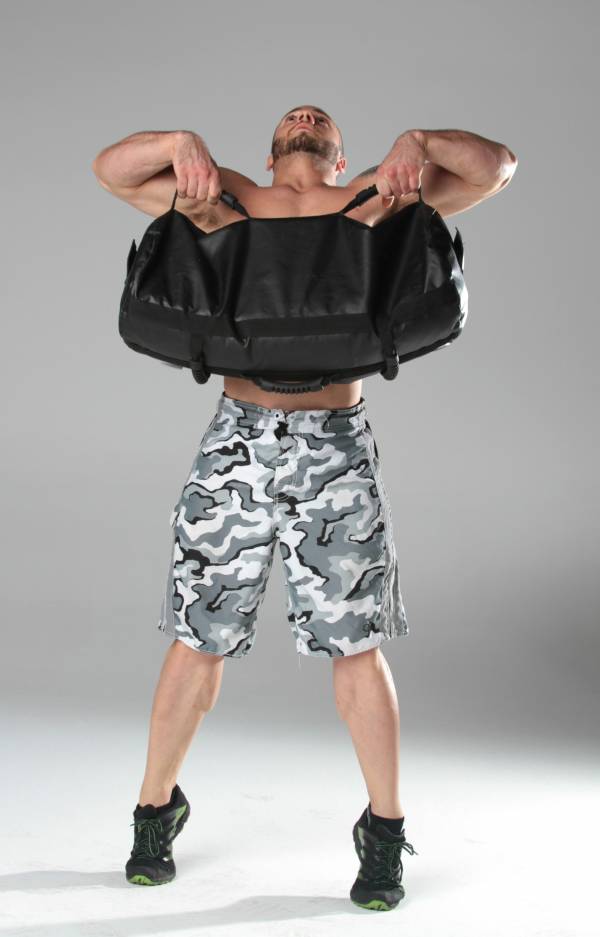
Drill #3: Arc Press From Half Kneeling
Most overhead pressing drills only allow our center of gravity to move up and down, again, very stable. There are mild frontal plane forces that occur during one-arm movements, but we can increase this challenge by using the arc press and a less stable body position.
The arc press causes the sandbag to move from side to side, placing far more emphasis in resisting side bending by the body. The half-kneeling position places us in an unstable body position, placing stress on our ability to resist leaning and side bending.
This makes single arm pressing far more important and if we slow down speed, we can build some serious pressing strength by identifying the gaps in our performance.
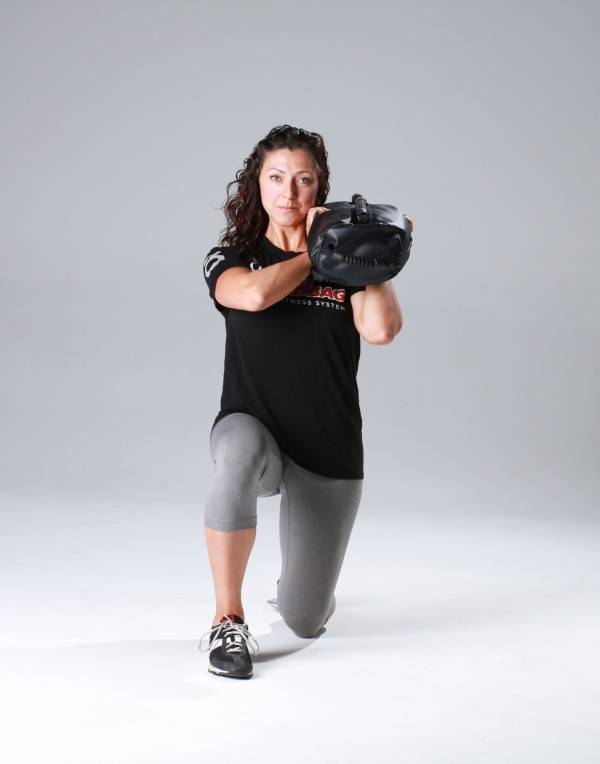
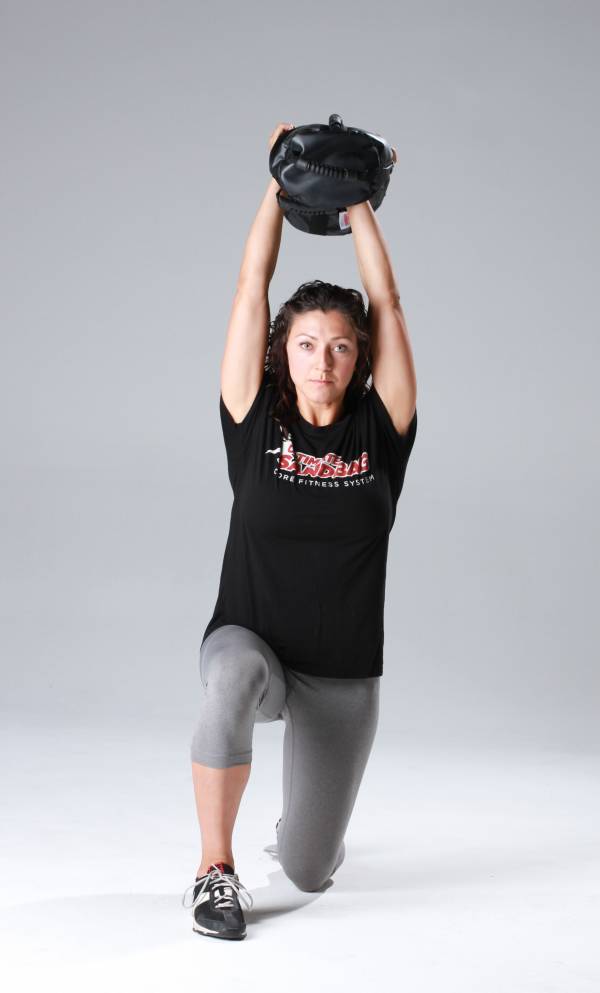
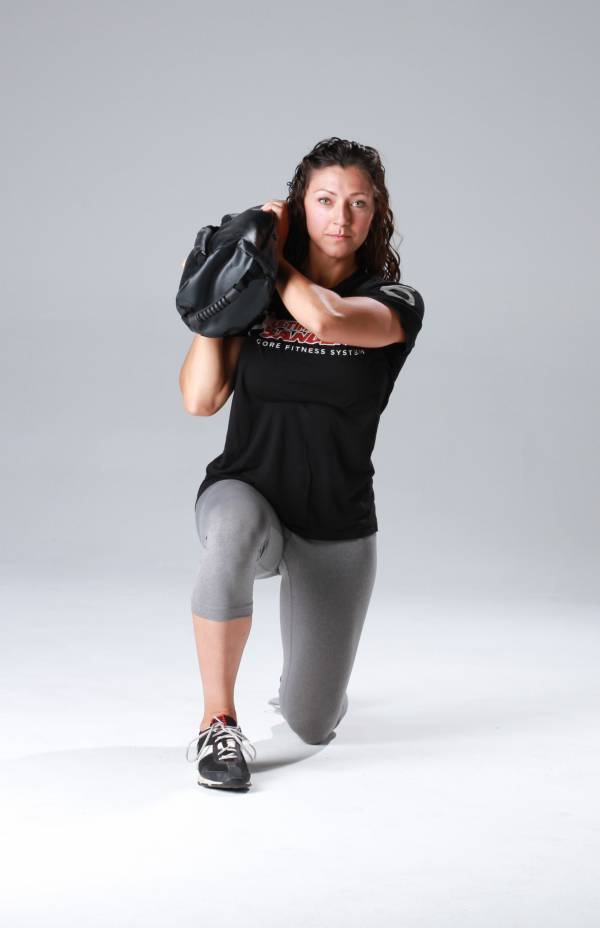
Drill #4: Lateral Lunge Clean to Balance
We just showed developing and absorbing force in the transverse plane, the lateral lunge clean to balance allows us to emphasize the frontal plane.
What is unique about this drill is the amount of deceleration that occurs because of not just the movement of the body, but the sandbag as well. Adding in the balance step increases our need to create hip extension and resisting the frontal plane forces.
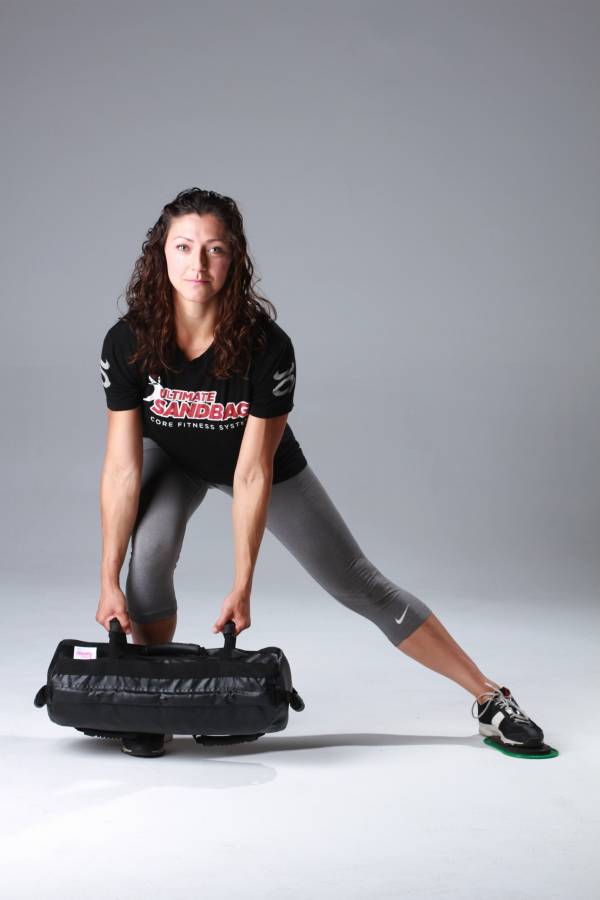
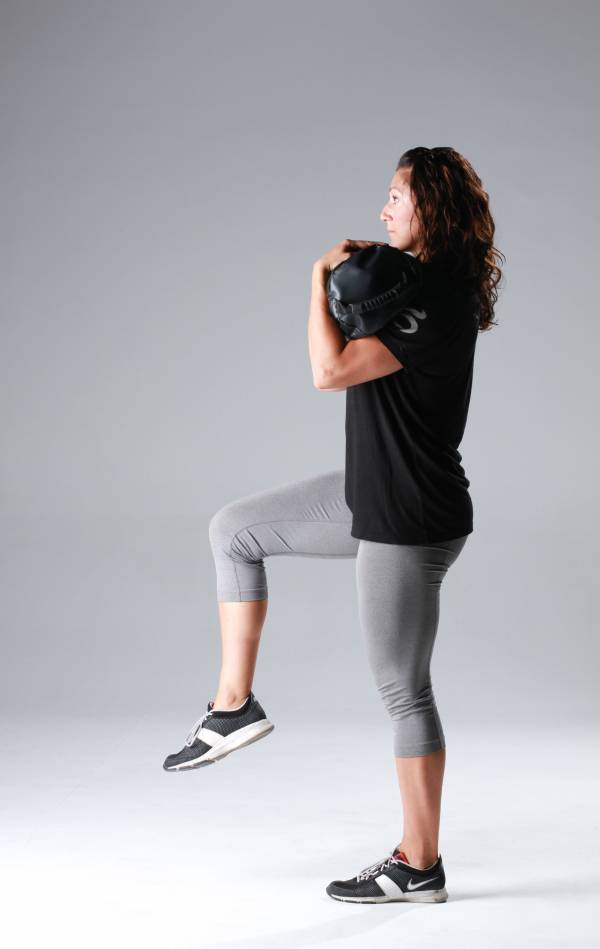
My hope is that we change the sandbag from a tool that we throw on our shoulder or run around with, to a tool with effective solutions. This will provide not just another tool to the coach or athlete, but a much more effective system.






